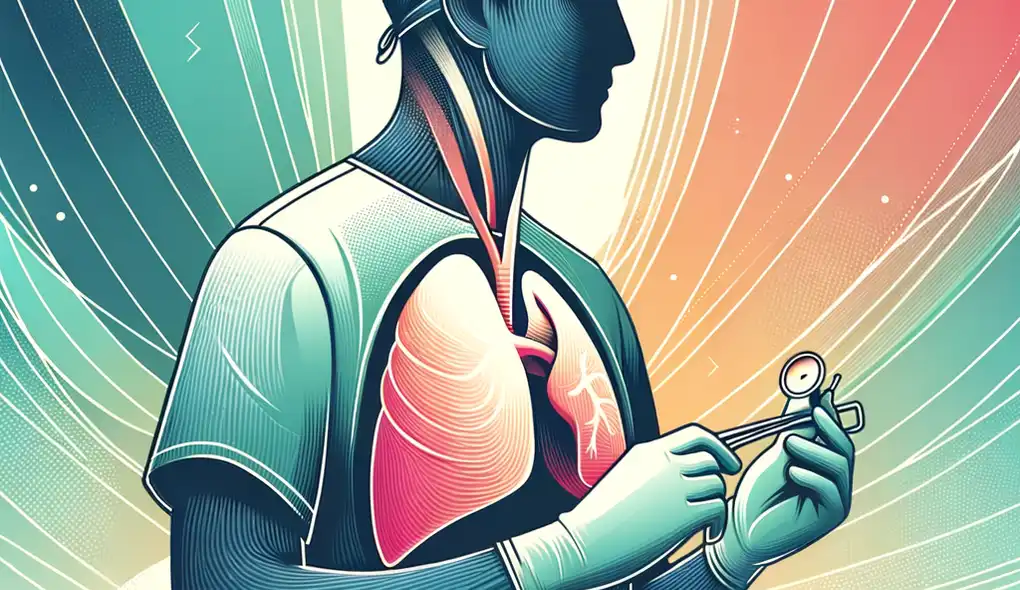How do you interpret diagnostic tests such as X-rays, CT scans, and MRIs?
Thoracic Surgeon Interview Questions
Sample answer to the question
As a thoracic surgeon, I interpret diagnostic tests such as X-rays, CT scans, and MRIs by analyzing the images and looking for abnormalities or signs of disease in the thoracic cavity. I also review the accompanying reports and compare the findings to the patient's medical history and symptoms. Based on my interpretation, I determine the appropriate course of action, whether it's further diagnostic tests, medication, or surgical intervention. It's important to have a strong understanding of thoracic anatomy, physiology, and pathology to accurately interpret these tests.
A more solid answer
As a thoracic surgeon, my interpretation of diagnostic tests such as X-rays, CT scans, and MRIs involves a comprehensive analysis of the images. I carefully examine the structures in the thoracic cavity to identify any abnormalities, such as tumors, lesions, or fractures. I also pay close attention to the size, shape, and density of the organs and tissues to assess their functionality and detect any signs of disease or injury. In addition to analyzing the images, I thoroughly review the accompanying reports, taking into account the patient's medical history and symptoms. This allows me to correlate the findings with the patient's condition and determine the appropriate course of action. Sometimes, further diagnostic tests may be required to gather more information, such as a biopsy or a PET scan. Other times, medication or surgical intervention may be necessary to address the identified issue. To ensure accurate interpretation, it's essential to have a strong knowledge of thoracic anatomy, physiology, and pathology, as well as experience with these types of tests and their limitations.
Why this is a more solid answer:
The solid answer provides a more comprehensive explanation of how the candidate interprets diagnostic tests. It includes specific details about the analysis of images, the assessment of structures and functionality, and the correlation with the patient's condition. It also highlights the importance of knowledge and experience in thoracic anatomy, physiology, and pathology. However, it could still be improved by discussing the utilization of advanced medical software for image analysis and collaborating with other specialists for a multidisciplinary approach to diagnosis.
An exceptional answer
Interpreting diagnostic tests such as X-rays, CT scans, and MRIs is a crucial part of my role as a thoracic surgeon. When analyzing these images, I approach them with a meticulous eye for detail and an extensive understanding of thoracic anatomy, physiology, and pathology. I carefully evaluate the images, assessing the size, shape, and density of structures in the thoracic cavity. I look for any abnormalities, such as tumors, nodules, or fluid collections, and determine their location, extent, and potential impact on surrounding organs and tissues. This assessment allows me to identify the appropriate course of action, whether it involves further diagnostic tests, medication, or surgical intervention. To enhance the accuracy of my interpretations, I utilize advanced medical software to assist with image analysis and 3D reconstructions. In addition, I collaborate closely with radiologists, pulmonologists, and other specialists to gain valuable insights from their expertise and ensure a multidisciplinary approach to diagnosis. By combining my technical skills, knowledge, and collaborative mindset, I strive to provide the highest level of care and precision in interpreting these diagnostic tests.
Why this is an exceptional answer:
The exceptional answer demonstrates a high level of expertise in interpreting diagnostic tests. It emphasizes the candidate's meticulous approach, extensive understanding of thoracic anatomy, and utilization of advanced medical software for image analysis. It also highlights their collaboration with other specialists for a multidisciplinary approach. Overall, the answer showcases the candidate's commitment to providing the highest level of care and precision in interpreting diagnostic tests.
How to prepare for this question
- Study and review thoracic anatomy, physiology, and pathology to strengthen your knowledge base.
- Familiarize yourself with common findings and abnormalities in thoracic diagnostic tests.
- Practice analyzing and interpreting X-rays, CT scans, and MRIs to improve your skills.
- Stay updated on the latest advancements in imaging technology and techniques.
- Develop a collaborative mindset and seek opportunities to work with radiologists, pulmonologists, and other specialists.
- Consider attending conferences or workshops on thoracic imaging and interpretation.
What interviewers are evaluating
- Knowledge of Thoracic Anatomy, Physiology, and Pathology
- Ability to Analyze Diagnostic Images
- Ability to Compare Findings with Medical History and Symptoms
- Ability to Determine Course of Action Based on Interpretation
Related Interview Questions
More questions for Thoracic Surgeon interviews